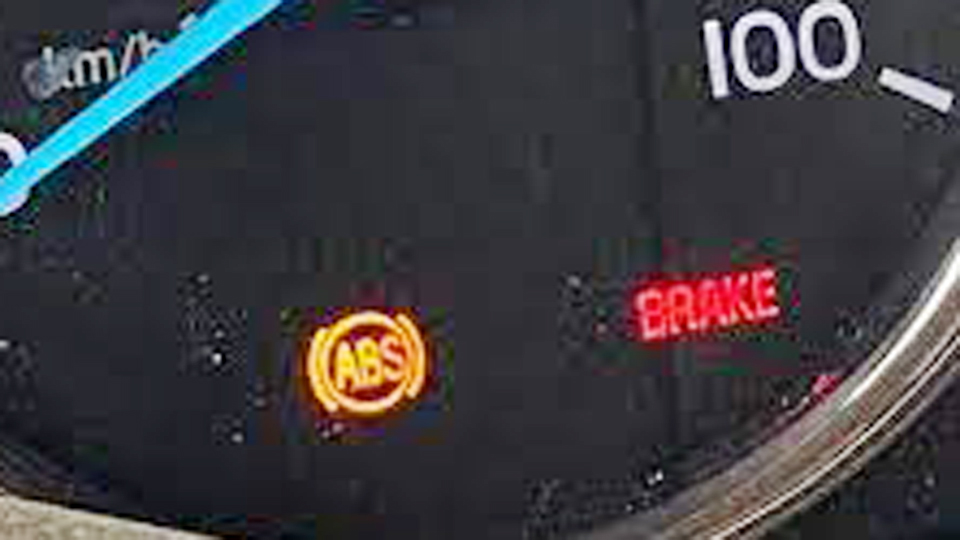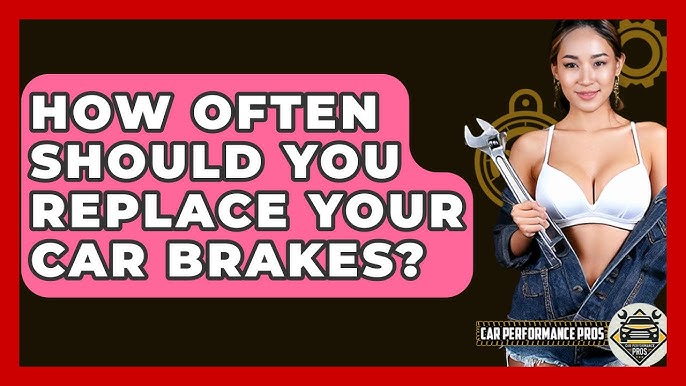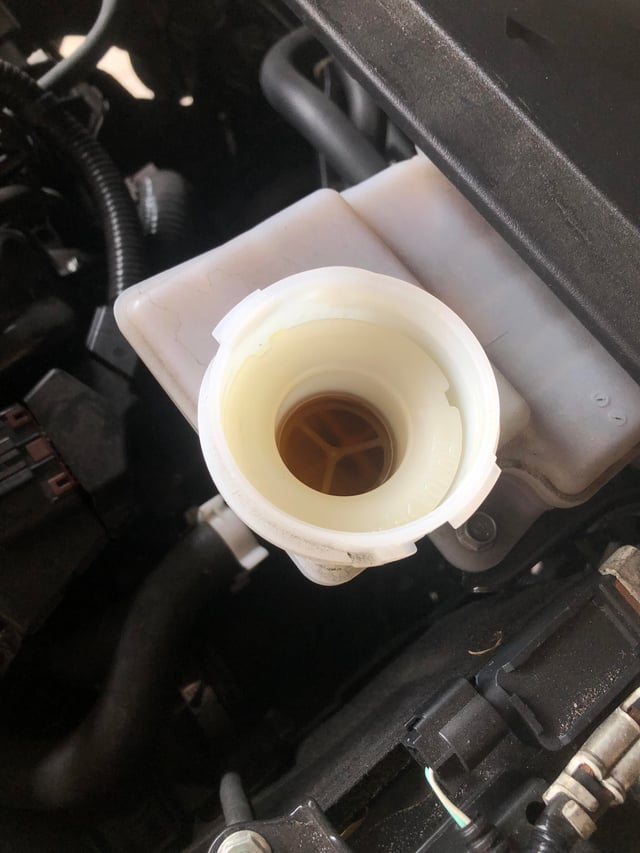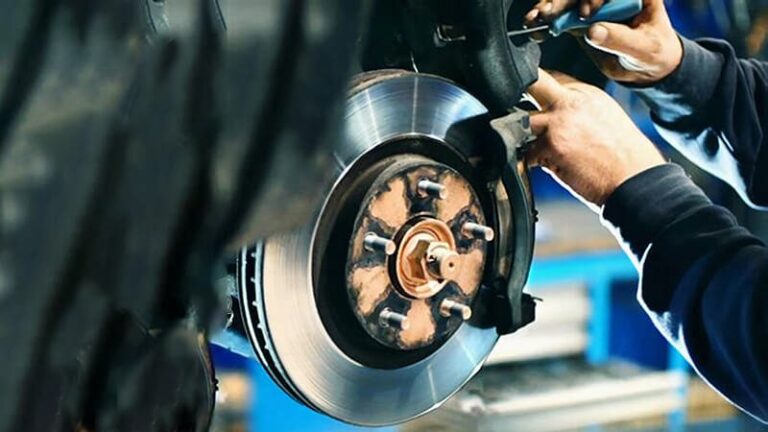Ever turned the key, heard a click, and wondered why your car refuses to start? Most folks jump straight to blaming the battery or starter, but there’s another part that can throw you off completely: the brake light switch. You might be asking yourself, “Can brake light switch cause car not to start?” The answer is yes—and it’s a problem I’ve run into many times while working on cars.
What makes this little switch so important is that it does double duty. Not only does it control your brake lights for safety on the road, but it also signals the system that it’s okay to start the engine. When it fails, your car doesn’t get the message, and suddenly you’re stuck. I can’t tell you how many times I’ve seen drivers tow in their car thinking the starter died, only to find out the fix was this small, inexpensive part hiding under the dashboard.

Image by kenstrans
Why the Brake Light Switch Matters
The brake light switch isn’t just a convenience feature—it’s a critical safety component. This small device, usually tucked under the dashboard near the brake pedal, controls your brake lights, ensuring they illuminate when you press the pedal. It also plays a role in other systems, like cruise control, shift interlock (for automatics), and even the starting circuit in many vehicles. A faulty switch can compromise safety, strand you in a parking lot, or lead to costly misdiagnoses if you’re not careful.
From a performance standpoint, a bad brake light switch can disrupt your car’s ability to shift gears or disengage cruise control, but the real kicker is its impact on starting. In terms of cost, you’re looking at $10–$50 for the part, with labor fees ranging from $50–$150 at a shop. DIY replacement? You could be back on the road in under an hour with a screwdriver and some patience. Let’s break it down.
What Is a Brake Light Switch and What Does It Do?
Understanding the Brake Light Switch
The brake light switch is a small electrical component that activates when you press the brake pedal. It’s typically a spring-loaded plunger or a lever-style switch mounted near the pedal assembly. When you step on the brake, the switch completes an electrical circuit, sending a signal to turn on your brake lights. In modern vehicles, it also communicates with the car’s computer (ECU) to manage functions like:
- Brake light activation: Signals other drivers when you’re slowing down or stopping.
- Shift interlock: Prevents you from shifting out of park without pressing the brake (in automatic transmissions).
- Cruise control deactivation: Disengages cruise control when you tap the brake.
- Starter circuit enablement: In some cars, the switch must be engaged to allow the engine to crank.
Think of it as a gatekeeper—it’s either “on” (brake pressed) or “off” (brake released). Simple, but vital.
Common Problems with Brake Light Switches
Over time, brake light switches wear out. They’re mechanical parts, after all, and constant use—think thousands of brake presses—takes a toll. Here are the most common issues I’ve seen in the shop:
- Stuck or misaligned switch: Dirt, corrosion, or poor installation can cause the switch to stick in the “on” or “off” position.
- Electrical failure: Internal contacts wear out, breaking the circuit and preventing signals from reaching the brake lights or other systems.
- Broken plunger or spring: Physical damage can stop the switch from engaging properly.
- Wiring issues: Though less common, damaged wiring or connectors can mimic switch failure.
Signs Your Brake Light Switch Is Failing
How do you know if your brake light switch is the problem? Look for these red flags:
- Brake lights don’t work: Check if your brake lights stay off when you press the pedal (have a friend check while you test).
- Brake lights stay on: If your brake lights are always on, even without pressing the pedal, the switch might be stuck.
- Car won’t shift out of park: For automatics, a faulty switch can disable the shift interlock.
- Cruise control issues: If cruise control won’t disengage when you tap the brake, the switch could be to blame.
- Car won’t start: In some vehicles, a bad switch prevents the starter circuit from engaging, leaving you stranded.
I once had a customer with a 2010 Toyota Camry who thought their starter was dead. After a quick check, I found the brake light switch wasn’t sending the signal to allow the car to crank. A $15 part and 20 minutes later, they were back on the road.
Can a Brake Light Switch Really Cause a No-Start Condition?
Why a Faulty Brake Light Switch Prevents Starting
Yes, a brake light switch can absolutely cause your car not to start, especially in vehicles with automatic transmissions. Many modern cars require the brake pedal to be pressed before the starter motor engages. This safety feature ensures you’re in control of the vehicle when it starts. The brake light switch is the component that tells the car’s computer, “Hey, the brake is pressed—go ahead and crank the engine.”
If the switch is faulty—say, it’s stuck in the “off” position or the contacts are worn out—the computer won’t get the signal, and the starter won’t engage. You might hear a click, or nothing at all, mimicking a dead battery or bad starter. This is especially common in brands like Toyota, Honda, Ford, and Chrysler, where the brake light switch is integrated into the starting circuit.
Diagnosing a No-Start Issue Tied to the Brake Light Switch
Here’s how I approach this in the garage:
Check the brake lights: Have someone watch your brake lights while you press the pedal. If they don’t light up, the switch is likely faulty.
Test the shift interlock: If you can’t shift out of park (in an automatic), it’s another clue the switch isn’t working.
Listen for the starter: Turn the key while pressing the brake. If you hear nothing, the switch might be blocking the starter circuit.
Use a multimeter: For the pros, test the switch for continuity. Disconnect it, set your multimeter to ohms, and check if the circuit closes when the plunger is pressed.
I remember a ‘15 Dodge Ram that came into the shop with a no-start complaint. The owner was ready to replace the starter, but I noticed the brake lights weren’t working. A quick multimeter test confirmed the switch was dead. Swapped it out, and the truck fired right up.
When and Why to Replace a Brake Light Switch
When Replacement Is Necessary
Replace your brake light switch if you notice any of the symptoms above—brake lights not working, car won’t shift, cruise control issues, or a no-start condition. Ignoring it can lead to safety risks (no brake lights = rear-end collision risk) or leave you stranded. Most switches last 50,000–100,000 miles, but heavy-footed drivers or harsh conditions (like dirt or moisture) can shorten their lifespan.
Why It’s Worth Fixing ASAP
A bad brake light switch isn’t just an inconvenience—it’s a safety hazard. Without brake lights, other drivers can’t tell when you’re slowing down, increasing the chance of accidents. Plus, if it’s causing a no-start issue, you’re stuck until it’s fixed. The good news? It’s one of the cheapest and easiest repairs you’ll ever do on a car.
OEM vs Aftermarket Brake Light Switches: Which Is Better?
OEM Brake Light Switches
OEM (Original Equipment Manufacturer) switches are made by the same company that built your car’s original parts. For example, a Toyota OEM switch might come from Denso or Aisin, while a Ford switch could be from Motorcraft.
Pros:
- Perfect fit and compatibility.
- Meets factory specs for reliability and safety.
- Often comes with a warranty (1–2 years from dealers).
- Less likely to fail prematurely.
Cons:
- More expensive ($30–$50 vs. $10–$20 for aftermarket).
- Not always available at local parts stores; you might need to order from a dealer.
Aftermarket Brake Light Switches
Aftermarket switches are made by third-party brands like Standard Motor Products, Dorman, or ACDelco. They’re widely available at places like AutoZone, Advance Auto Parts, or O’Reilly.
Pros:
- Cheaper, often half the price of OEM.
- Readily available at most auto parts stores or online.
- Decent quality from reputable brands.
Cons:
- Fitment can be hit-or-miss (I’ve seen poorly molded plungers cause issues).
- Some brands use cheaper materials, leading to shorter lifespans.
- Risk of counterfeit parts, especially online.
Comparison Table: OEM vs. Aftermarket Brake Light Switches
| Feature | OEM Switch | Aftermarket Switch |
|---|---|---|
| Price | $30–$50 | $10–$20 |
| Fitment | Exact match | May require adjustment |
| Durability | 50,000–100,000 miles | Varies (20,000–80,000 miles) |
| Availability | Dealerships, some stores | Auto parts stores, online |
| Warranty | 1–2 years (dealer) | 6 months–1 year (brand) |
| Top Brands | Denso, Motorcraft, Mopar | Standard, Dorman, ACDelco |
My Take on OEM vs. Aftermarket
In my experience, OEM is the way to go for critical safety components like brake light switches. I’ve seen too many aftermarket switches fail within a year, especially on high-mileage vehicles. That said, if you’re on a budget, brands like Standard Motor Products or ACDelco are solid aftermarket options—just double-check the fitment for your specific make and model. For example, a 2015 Honda Accord needs a switch compatible with its electronic shift interlock, so don’t skimp on research.
How to Spot Genuine vs. Fake Brake Light Switches
Counterfeit parts are a real problem, especially when shopping online. Here’s how I spot fakes in the shop:
- Packaging: Genuine OEM parts come in branded boxes (e.g., Toyota, Ford) with part numbers and holograms. Aftermarket brands like Dorman have consistent, professional packaging too.
- Price: If an “OEM” switch is suspiciously cheap (like $5 for a Toyota part), it’s likely fake.
- Part Number: Cross-reference the part number with your vehicle’s manual or a trusted parts catalog (like RockAuto or dealer websites).
- Build Quality: Genuine switches have smooth, precise molding and clear markings. Fakes often feel flimsy or have sloppy logos.
Pro tip: Stick to reputable retailers like AutoZone, NAPA, or Amazon’s verified sellers. If you’re buying OEM, go through a dealership or a trusted online parts supplier like PartsGeek.
Step-by-Step Guide to Replacing a Brake Light Switch
Tools You’ll Need
- Flathead and Phillips screwdrivers (for panel removal).
- Multimeter (optional, for testing).
- Replacement brake light switch (OEM or trusted aftermarket).
- Flashlight or shop light (it’s dark under the dash).
- Pliers or a small wrench (for some models).
Safety First
- Disconnect the battery to avoid electrical shorts.
- Work in a well-lit area to avoid losing small parts.
- Double-check your vehicle’s manual for specific instructions.
Replacement Steps
- Locate the switch: Crawl under the driver’s side dashboard and find the brake pedal assembly. The switch is usually near the top of the pedal arm, held by a clip or screws.
- Disconnect the wiring: Unplug the electrical connector. Some models have a push-tab; others require gentle prying.
- Remove the old switch: Unscrew or unclip the switch. Some rotate out like a bayonet mount—check your manual.
- Install the new switch: Position it exactly as the old one was. Ensure the plunger aligns with the pedal arm.
- Reconnect the wiring: Plug the connector back in securely.
- Test before closing up: Reconnect the battery, press the brake, and have someone check if the brake lights work. Test starting the car and shifting out of park.
- Secure everything: Tighten screws or clips, and replace any dashboard panels you removed.
Common Mistakes to Avoid
- Misaligning the switch: If the plunger isn’t properly positioned, it won’t engage correctly.
- Forgetting to test: Always check the brake lights and starter before buttoning things up.
- Buying the wrong part: Double-check your vehicle’s year, make, model, and trim. A 2018 F-150 XLT might use a different switch than an Lariat.
I once helped a buddy replace a switch on his ‘07 Chevy Silverado. He bought a cheap eBay part, and it didn’t fit right—kept popping out. We swapped it for an ACDelco unit, and it was smooth sailing. Lesson learned: don’t skimp on fitment.
Maintenance Tips for Brake Light Switches
Keep it clean: Dirt and grime can cause the switch to stick. Use a dry cloth to wipe the pedal assembly during routine maintenance.
Check alignment: If you’re doing brake work (like replacing pads), ensure the pedal arm hasn’t shifted, affecting the switch.
Inspect wiring: Look for frayed or loose connectors when you’re under the dash for other repairs.
Test periodically: Make it a habit to check your brake lights every few months, especially on older vehicles.
Personal Anecdote: The Stranded Soccer Mom
A few years back, a customer rolled into my shop (well, got towed in) with a 2012 Chrysler Town & Country that wouldn’t start. She was frazzled—kids in the back, late for soccer practice. She thought it was the battery or starter, but I noticed her brake lights weren’t working. Popped under the dash, tested the switch, and sure enough, it was toast. A $25 Mopar switch and 15 minutes later, she was back on the road, kids cheering. It’s moments like that where a simple fix feels like a superhero moment.
Conclusion: Making Smarter Brake Light Switch Decisions
The brake light switch might be small, but it punches above its weight in your car’s safety and functionality. Whether it’s causing a no-start issue, killing your brake lights, or locking you in park, this part demands attention. By understanding its role, spotting failure signs early, and choosing the right replacement (OEM for reliability, trusted aftermarket for budget), you can save time, money, and headaches.
Always keep a multimeter handy—it’s your best friend for diagnosing electrical gremlins like this. Next time your car won’t start, check the brake lights before you call for a tow. You might just save yourself a trip to the shop.
FAQ: Common Brake Light Switch Questions
Why do my brake lights stay on even when I’m not pressing the pedal?
This usually means the brake light switch is stuck in the “on” position or misaligned. Check the switch’s plunger and adjust or replace it. Dirt buildup can also cause this—clean the pedal assembly first.
Can a bad brake light switch drain my battery?
Yes, if the switch is stuck “on,” it keeps the brake lights illuminated, draining the battery over time. I’ve seen this on older GM trucks—check the switch before assuming it’s the alternator.
How do I know if I need an OEM or aftermarket switch?
Check your vehicle’s manual for the part number, then compare prices and reviews. OEM is safer for critical systems, but brands like Standard or Dorman are fine for budget fixes if they match specs.
Can I drive with a faulty brake light switch?
Not recommended. Without brake lights, you’re a hazard to other drivers, and a no-start issue could leave you stranded. Fix it ASAP—it’s a quick, cheap repair.
How long does it take to replace a brake light switch?
For most vehicles, it’s a 15–30 minute job with basic tools. Some models, like certain BMWs, might take longer due to tight dash clearance.



